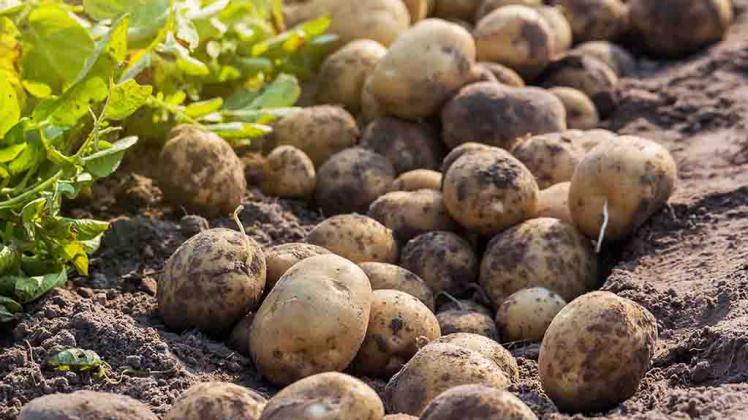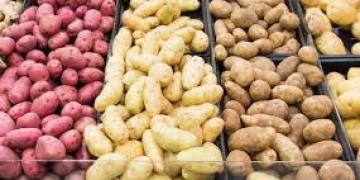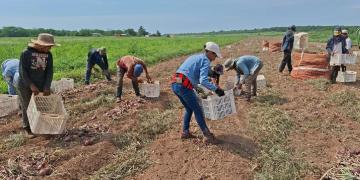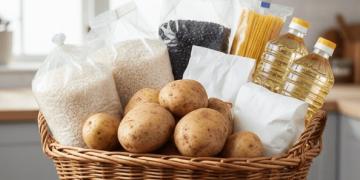Gran Bretaña: Potato farmers feel the heat of variable weather
As extreme weather events increase in frequency, Sara Maslowski, senior analyst at the Agriculture and Horticulture Development Board (AHDB) for potatoes, reviews how this year’s weather conditions have affected the potato crop and prices when compar

The 2018 season so far has been characterised by weather extremes, from snow in April delaying planting to one of the warmest summers on record. This has resulted in unusual market trends and has exaggerated differences amongst regions, growers and market sectors.
The story so far
Following a high production year and a well-supplied market in 2017, low potato prices provided little financial incentive for growers. As a result, the 2018 season saw plantings drop by 3% to the third lowest on record of 119,000 hectares. A planned lower area was likely exacerbated further by challenging planting conditions in the spring.
What followed was a summer of near record hot, dry weather across the UK and Europe, not seen for over a decade. This has led to an industry in two halves; fields with irrigation available, estimated to be around half of the planted area, and unirrigated crop.
Where irrigation has been available, unsurprisingly crops are generally faring better. However, even for these crops, yields are reported as down, particularly tuber size, and there are reports of secondary growth. Unirrigated crops, particularly those on lighter soils, are reported to be suffering badly, lacking yield and with secondary growth and skin finish issues.
A national divide is also likely to develop, with crops in Scotland, on the whole reported to be faring better than England. This was seen in the drought year of 2006, when yields in Scotland were around 25% higher than England, on average.
Price reactions
In a typical year a relationship would be evident between the available supply and ex-farm prices at the start of the new season, which could give indicators to how the season would play out. Figure 1 below illustrates this relationship.
For example, in 2012/13 growers’ stocks at the end of March were low at 0.8 million tonnes, which led to the season ending with a high AHDB free-buy average potato price of just under £237 a tonne. However, ample supplies from harvest 2013 coming onto the market resulted in a drop of around £147 a tonne between the last old crop price of 2012/13 and the first price of 2013/14 season.
Heading into 2018/19, AHDB’s end of March stocks survey suggested that a large amount of the crop was still available in growers’ stores. This would typically add pressure to prices, resulting in a smaller difference between the last old crop price and the first new crop price (as can be seen in 2013 and 2014).
However, the 2018 season is behaving in a different way. A combination of the lateness of supply coupled with industry concerns around the size and availability of the new crop, has meant that the 2018/19 season started with prices around £190 a tonne higher than at the end of the previous season.
A national divide is also likely to develop, with crops in Scotland on the whole reported to be faring better than England
Additionally, old crop supply is still being traded, largely in the packing market, as supplies are on the market for a sizeable price discount to new crop supplies. Typically, old crop would be used up by the end of July, ready to be replaced as the new season main-crop harvest gets under way. However, this season, old crop supplies are being moved by some around six weeks later than usual.
As main-crop lifting gets under way, the impact of increased supplies coming onto the market can be seen on ex-farm prices that, after a very high start to the season, appear to be on a sharp downward trend. Figure 2 below shows how 2018/19 free-buy prices have dropped by £24/t since first reported in August.
What else for the rest of the season?
While a smaller crop is anticipated for 2018, there is potential for a much shorter season than would be expected, which could help to alleviate supply pressure for some. However, as discussed above, not all market sectors are equal.
Packers, as well as using old crop supplies, could benefit from the fact that nearly half of the Scottish area is grown for packing and yields are likely to be higher than for England. This may allow some packers to source supplies from further north, although haulage is a potential barrier.
These unique circumstances, together with the ability to be flexible with specs, may help mitigate some of the impacts of this season’s potential supply shortfall for the packing potatoes.
However, chipping and processing markets need tubers with characteristics suitable for frying (ie sufficient size and appropriate dry matter) and are anticipating a tighter supply situation. In order to ensure sufficient supply, processors have reportedly been looking to source potatoes from non-traditional markets, such as packing varieties with sufficient dry matter, which may have a knock-on effect in those markets.
Preparing for the future
So while this season is one of extremes, the Met Office forecasts severe weather events to become more frequent, proving a challenge for the industry. The need for resilience is more important than ever before. For this season, help is available at AHDB’s 2018 Drought Hub. While looking to the future, AHDB’s bespoke online benchmarking tool Farmbench and Market Intelligence can help understand costs of production and market drivers in a more changeable environment.
The more variable weather we see in the future, the more uncertain our markets will become. Potato growers need to be aware of the risks and plan accordingly to ensure a healthy and thriving potato supply chain that can deliver what consumers want.
By Sara Maslowski, senior analyst, AHDB
Fuente: https://natwest.contentlive.co.uk/content/potato-farmers-feel-the-heat-of-variable-weather




